GIGABYTE BRIX Pro: A Second Look at the Intel i7-4770R with Iris Pro HD 5200
by Ganesh T S on June 14, 2014 5:00 PM ESTGaming Performance Evaluation
The gaming credentials of the BRIX Pro received a huge marketing boost when it was distributed as a 'Steam Machine' at the Steam Developers Conference earlier this year. Based on paper specifications alone, the BRIX Pro should be able to perform much better than any other previous Intel IGP. For the purpose of benchmarking, we chose five different games (Company of Heroes 2, Sleeping Dogs, Tomb Raider, Bioshock Infinite and DiRT Showdown) at three different quality levels. For today's review, we have numbers from the BRIX Pro's current configuration, the Intel D54250WYKH NUC (HD 5000) and the BRIX Pro with the configuration from the earlier review. In addition, we also dusted off a old gaming mini-PC, the ASRock Vision 3D 252B and processed our gaming benchmarks on that unit's GT 540M using the latest NVIDIA drivers.
Corsair Flash Voyager GS - A Portable Steam Drive
As someone focusing on HTPCs and multimedia aspects, I rarely get to process gaming benchmarks, even while evaluating GPUs. One of the aspects that I feared was spending lot of time in installing the same games again and again on different PCs under the review scanner. The solution was to go the Steam route. Unfortunately, Steam also likes to keep the game files updated. A quick online search revealed that Steam could make use of an external drive for storing the game executables and downloadable content.
While searching for the ideal external drive to use for this purpose, Corsair came forward with their Flash Voyager GS USB 3.0 drive. The 128 GB capacity was more than enough for all the games that I planned to use for benchmarking. The 'thumb drive' nature meant that shuttling it from one system to another couldn't be any simpler. However, the deal clincher was the advertised read speeds of 275 MBps. With the Steam drive on-the-go use-case being read-heavy, the Corsair Flash Voyager GS USB 3.0 128GB Flash Drive became my portable steam drive.
Benchmark Numbers
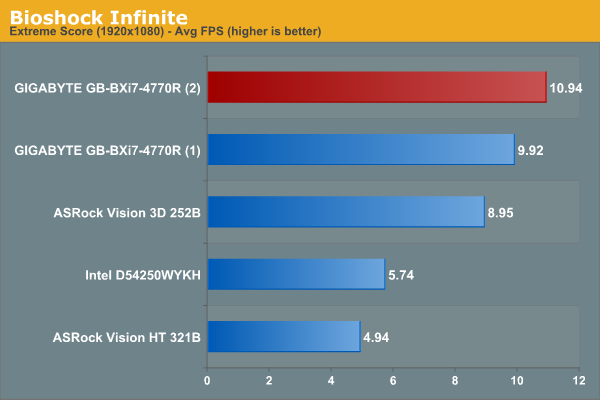
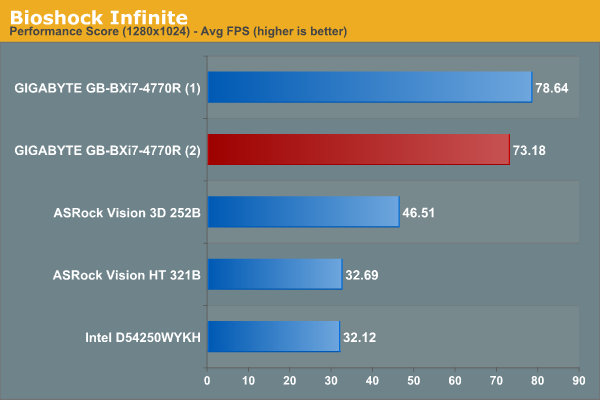
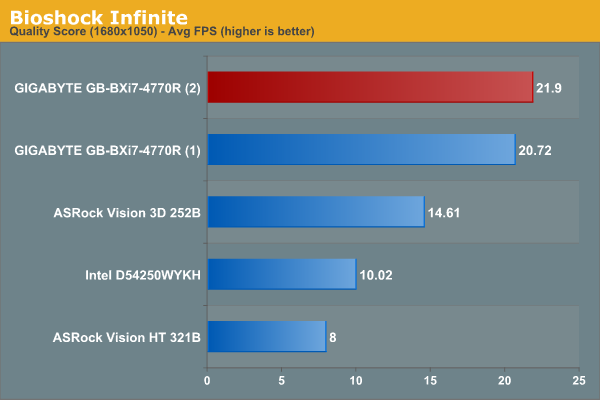

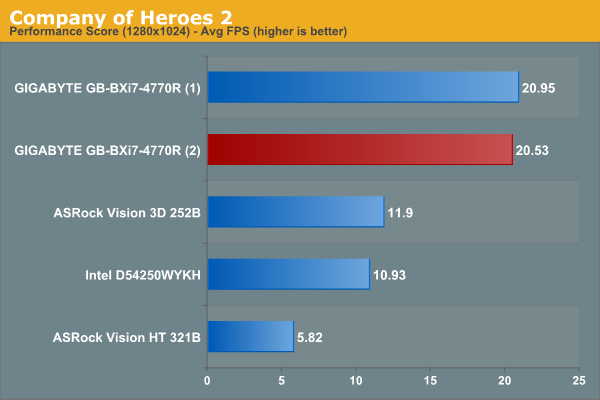


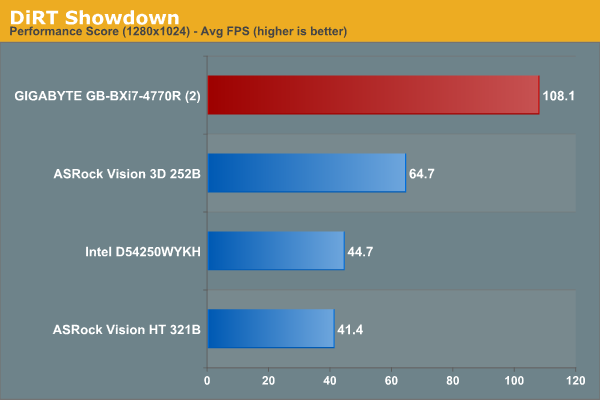
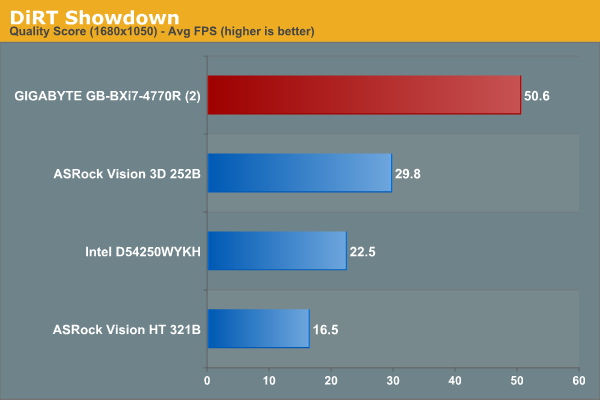
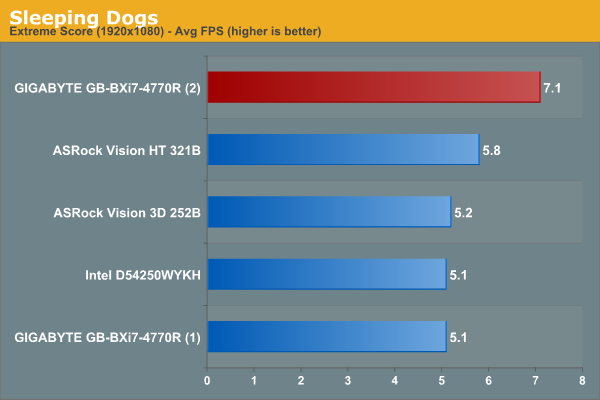
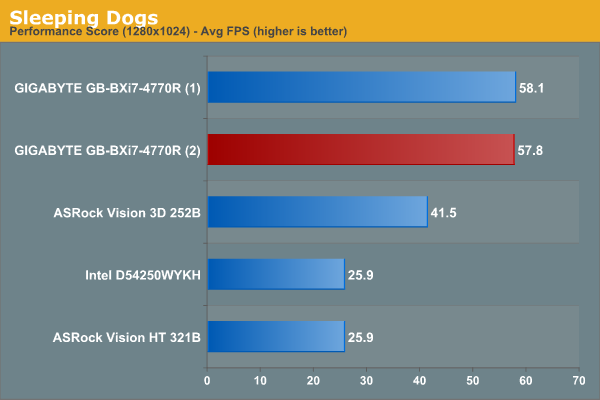

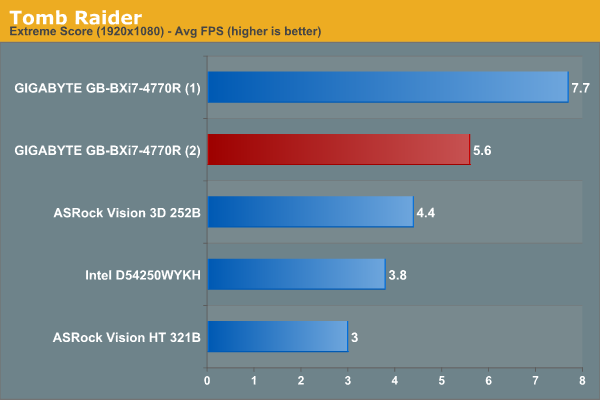
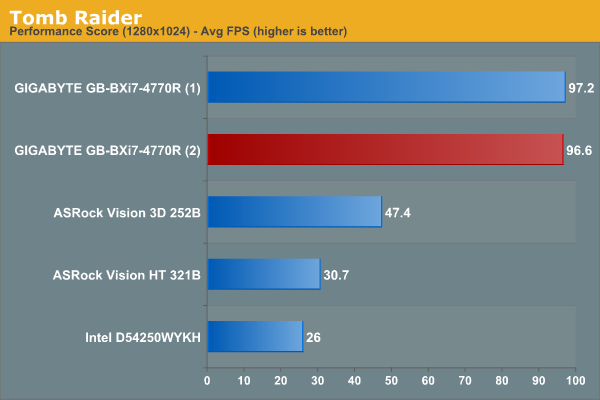
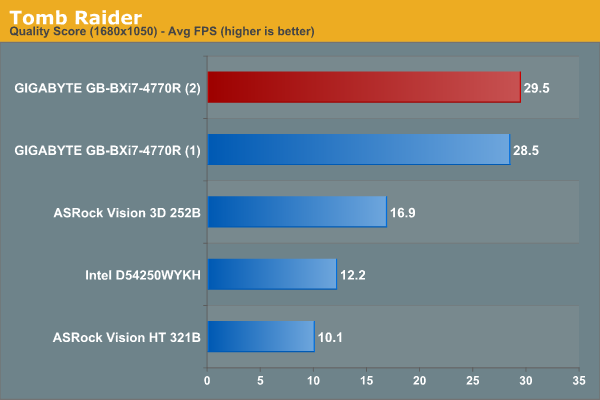
We see that the extra CPU grunt as well as the more powerful GPU clearly make the BRIX Pro stand out. Most of the games also benefit from the higher DRAM speeds (particularly at higher quality levels). The gaming credentials also outweigh that of the ASRock Vision 3D 252B, a bonafide gaming mini-PC just two generations old. However, as we shall see in the forthcoming review of the ASRock VisionX 420D, the BRIX Pro's i7-4770R is no match for a discrete mobile GPU such as the Radeon R9 M270X. Relaxing the size and power consumption requirements a bit gives an opportunity for the slightly larger VisionX 420D to deliver a better gaming performance at approximately the same cost.











55 Comments
View All Comments
Dirk Broer - Sunday, June 22, 2014 - link
RAM speeds have a BIG impact on the performance of IGPs, both for Intel and AMD. Speed is even <a href="http://www.anandtech.com/show/7364/memory-scaling-... important</a> than Latency.Hrel - Monday, June 16, 2014 - link
Except that paying for that "faster" RAM costs you money and yields no tangible benefit beyond 1866. The price/performance sweet spot is 1866.http://www.anandtech.com/show/7364/memory-scaling-...
Dirk Broer - Sunday, June 22, 2014 - link
"you can easily get 2133 for a decent price" You've seen the photograph, with SoDIMMs? Where do you buy 2133 MHz SoDIMMS for a decent price?TwistedKestrel - Saturday, June 14, 2014 - link
I don't understand how graphics performance is worse if the RAM in the (2) is faster in every way. Even if you didn't use the XMP profile, it should still be faster!TwistedKestrel - Saturday, June 14, 2014 - link
I meant to say, worse in ANY scenario. The (2) should win out every time, not just some of the time.ganeshts - Saturday, June 14, 2014 - link
In areas where they are close or (1) wins out, the error is within measurement margin, but in the gaming scenarios where there is a big difference, (2) wins handsomely.Some benchmarks are also not dependent on the memory (CPU-bound).
Samus - Sunday, June 15, 2014 - link
It might be worth investigating whether the crystal well gpu can decrease CPU throughput when it is heavily taxed. That would explain why giving crystal well more memory bandwidth slightly decreases CPU performance. Although they are separate parts of the die, they communicate across the same bus and are flip-chip limited.etamin - Saturday, June 14, 2014 - link
My guess is that the difference is more related to thermals than RAM. Intel iGP's are less dependent on DRAM speeds than AMD's, especially the Crystal Well parts. Outside of the one Tomb Raider benchmark at 1080p, the performance drop isn't significant (at that FPS, it's all kind of irrelevant anyways). Since the max power draw is higher on the 2nd edition, it's probably attributed to a combination of silicon quality and throttling.dylan522p - Saturday, June 14, 2014 - link
Why did you use a 840 Evo. It is inferior to the MX100 which is also cheaper. For the same price you can get a drive with better nand and double the storage.ganeshts - Saturday, June 14, 2014 - link
Well, this piece has been in the works for a couple of months now.. When I built the refreshed config, the Samsung 840EVO was the best value for money.. I see that the MX100 came to market just a couple of weeks back..